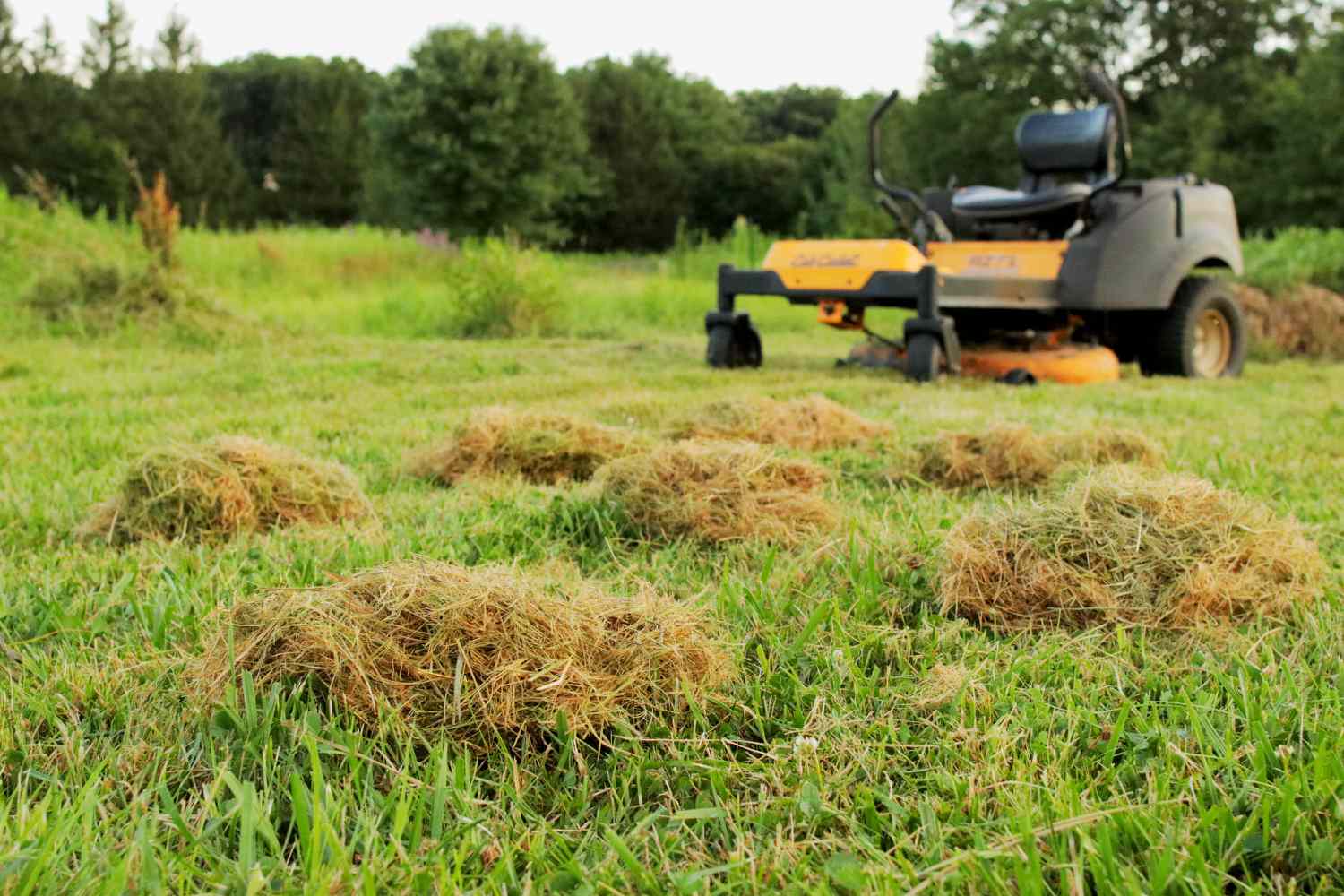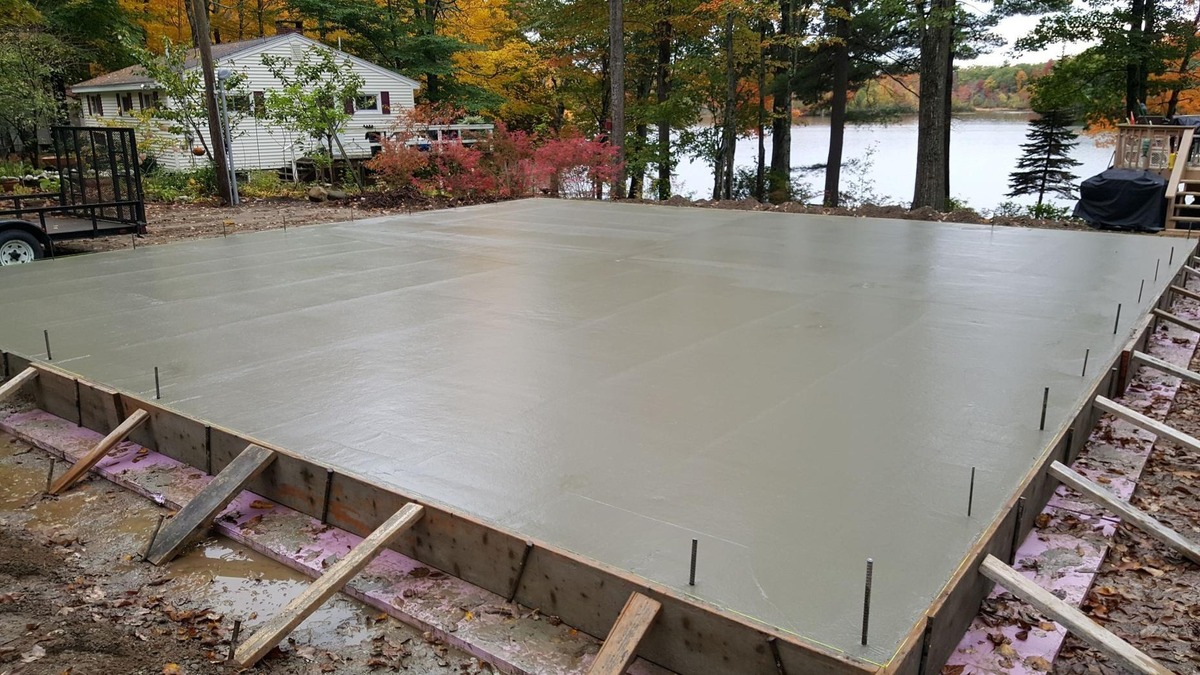Home>Gardening & Outdoor>Landscaping Ideas>What Grass Has Thick Blades


Landscaping Ideas
What Grass Has Thick Blades
Modified: August 28, 2024
Discover the best landscaping ideas with thick-bladed grass for a lush and vibrant outdoor space. Explore options for your lawn today!
(Many of the links in this article redirect to a specific reviewed product. Your purchase of these products through affiliate links helps to generate commission for Storables.com, at no extra cost. Learn more)
Characteristics of Grass with Thick Blades
Grass with thick blades is a popular choice for lawns and landscapes due to its lush and robust appearance. These grasses possess distinct characteristics that set them apart from other varieties, making them a sought-after option for homeowners and landscapers alike.
-
Lush Appearance: Grass with thick blades is known for its luxuriant and dense growth, creating a visually appealing and vibrant lawn. The blades are broad and robust, giving the grass a substantial and healthy look.
-
Drought Tolerance: Many types of grass with thick blades exhibit excellent drought tolerance, making them well-suited for regions with limited water availability. The thickness of the blades helps these grasses retain moisture, enabling them to thrive in arid conditions.
-
Foot Traffic Resistance: Due to their sturdy nature, grasses with thick blades are often more resilient to foot traffic compared to finer-bladed varieties. This makes them an ideal choice for lawns that experience frequent use, such as family gatherings and outdoor activities.
-
Shade Tolerance: Some species of grass with thick blades demonstrate a higher tolerance for shaded areas, allowing them to maintain their lush appearance even in partially shaded or dappled light conditions. This versatility makes them a versatile option for diverse landscaping environments.
-
Low Maintenance: In general, grasses with thick blades require minimal maintenance, making them an attractive choice for homeowners seeking a visually striking lawn without extensive upkeep. Their robust nature often reduces the need for frequent mowing and watering.
-
Weed Suppression: The dense growth of grass with thick blades can help suppress the growth of weeds, contributing to a cleaner and more uniform lawn. This natural weed resistance is a valuable benefit for maintaining a healthy and vibrant outdoor space.
-
Visual Texture: The thick blades of this grass variety add a unique textural element to the landscape, creating visual interest and depth. When combined with other plantings or landscaping features, the lush texture of these grasses can enhance the overall aesthetic appeal of the outdoor space.
Grass with thick blades offers a range of benefits and visual appeal, making it a popular choice for landscaping projects. Understanding the distinct characteristics of these grasses can help homeowners and landscapers make informed decisions when selecting the most suitable option for their outdoor spaces.
Key Takeaways:
- Grass with thick blades offers lush, low-maintenance lawns with drought resistance and weed suppression. It’s perfect for busy homeowners who want a vibrant yard without extensive upkeep.
- Common types like Fescue and Kentucky Bluegrass thrive in different climates, providing durable, visually appealing options for diverse landscaping needs.
Read more: What Is The Thick-Bladed Grass In My Lawn
Common Types of Grass with Thick Blades
Grass with thick blades encompasses a diverse array of species, each with its unique attributes and suitability for various climates and soil conditions. When considering options for a lush and vibrant lawn, it's essential to explore the common types of grass with thick blades to determine the best fit for specific landscaping needs.
-
Fescue Grass: Fescue grass varieties, such as tall fescue and fine fescue, are renowned for their thick blades and exceptional adaptability. These grasses thrive in cool-season regions and are prized for their lush appearance and durability. Tall fescue, in particular, is known for its deep green color and robust growth, making it a popular choice for lawns and landscapes in temperate climates.
-
Kentucky Bluegrass: Widely recognized for its dense and luxurious growth, Kentucky bluegrass is a top contender among grasses with thick blades. This cool-season grass species exhibits excellent resilience and is well-suited for lawns that endure moderate foot traffic. Its rich green hue and thick blades contribute to its visual appeal, making it a favored option for residential and commercial landscaping projects.
-
St. Augustine Grass: As a warm-season grass with broad and thick blades, St. Augustine grass thrives in regions with hot and humid climates. Its lush growth and shade tolerance make it an ideal choice for lawns in southern regions, where it can withstand the rigors of high temperatures and periodic drought. The thick blades of St. Augustine grass contribute to its robust and vibrant appearance, enhancing the overall aesthetic of the landscape.
-
Zoysia Grass: Zoysia grass varieties are celebrated for their dense growth and thick blades, making them a popular choice for lawns and recreational areas. These warm-season grasses exhibit excellent drought tolerance and are well-suited for regions with hot summers. The thick blades of Zoysia grass contribute to its ability to withstand foot traffic and maintain a lush, green appearance, making it an attractive option for residential lawns and sports fields.
-
Bermuda Grass: Known for its resilience and rapid growth, Bermuda grass features thick blades that contribute to its robust and visually appealing nature. This warm-season grass is prized for its ability to withstand heavy use and recover quickly from stress, making it a preferred choice for lawns, golf courses, and athletic fields. The thick blades of Bermuda grass enhance its durability and contribute to its overall lush appearance.
Understanding the characteristics and growth requirements of these common types of grass with thick blades is essential for selecting the most suitable option for a vibrant and resilient lawn. By considering factors such as climate, maintenance needs, and intended use, homeowners and landscapers can make informed decisions when choosing the ideal grass variety for their outdoor spaces.
Benefits of Grass with Thick Blades
Grass with thick blades offers a multitude of advantages that contribute to its popularity in landscaping and lawn care. These benefits extend beyond visual appeal, encompassing practical and functional aspects that enhance the overall quality and resilience of outdoor spaces.
-
Lush Aesthetic: The thick blades of this grass variety create a lush and vibrant aesthetic, elevating the visual appeal of lawns and landscapes. The dense growth and robust texture contribute to a luxurious and well-manicured appearance, enhancing the overall beauty of outdoor environments.
-
Drought Resistance: Many grasses with thick blades exhibit remarkable drought resistance, allowing them to thrive in regions with limited water availability. The thickness of the blades enables these grasses to retain moisture more effectively, reducing the reliance on frequent watering and promoting sustainability in landscaping practices.
-
Durability and Resilience: The sturdy nature of grass with thick blades enhances its durability, making it more resilient to foot traffic and environmental stress. This resilience is particularly valuable for lawns that experience regular use, as the grass can withstand the impact of activities and retain its lush appearance.
-
Weed Suppression: The dense growth of grass with thick blades naturally suppresses the growth of weeds, minimizing the need for chemical interventions and promoting a healthier lawn ecosystem. This inherent weed resistance contributes to a cleaner and more uniform lawn, reducing maintenance efforts and enhancing the overall health of the grass.
-
Shade Tolerance: Certain species of grass with thick blades demonstrate a higher tolerance for shaded areas, maintaining their lush appearance even in partially shaded conditions. This versatility allows homeowners to achieve consistent greenery throughout their landscapes, regardless of varying light exposure.
-
Low Maintenance: Grasses with thick blades generally require minimal maintenance, reducing the time and effort needed for lawn care. Their robust nature often translates to less frequent mowing and watering, offering homeowners a practical and time-saving landscaping solution.
-
Visual Texture and Depth: The thick blades of this grass variety contribute to the visual texture and depth of the landscape, adding dimension and interest to outdoor spaces. When combined with other landscaping elements, the lush texture of these grasses enhances the overall aesthetic appeal of the environment.
Understanding the diverse benefits of grass with thick blades empowers homeowners and landscapers to make informed decisions when selecting the most suitable option for their outdoor spaces. From visual allure to practical advantages, these grasses offer a compelling array of benefits that contribute to the creation of vibrant, resilient, and low-maintenance landscapes.
How to Care for Grass with Thick Blades
Caring for grass with thick blades is essential to maintain its lush appearance and overall health. By following proper maintenance practices, homeowners and landscapers can ensure that these robust grasses thrive and contribute to vibrant, resilient lawns and landscapes.
Regular Mowing
When caring for grass with thick blades, it's important to establish a regular mowing schedule to maintain an optimal height for the grass. While the specific mowing height may vary depending on the grass species, a general rule of thumb is to avoid cutting more than one-third of the grass blade length in a single mowing session. This helps prevent stress on the grass and promotes healthy growth.
Read more: What Kind Of Grass Has Runners
Adequate Watering
Proper watering is crucial for the well-being of grass with thick blades, particularly during dry periods. Deep, infrequent watering is often recommended to encourage the development of deep roots and enhance drought tolerance. It's important to monitor soil moisture levels and adjust the watering frequency based on environmental conditions to ensure that the grass receives adequate hydration without promoting waterlogged soil.
Fertilization
Applying a balanced fertilizer at the appropriate times can bolster the health and vibrancy of grass with thick blades. Understanding the specific nutrient requirements of the grass species is essential for determining the most suitable fertilizer formulation and application schedule. By providing essential nutrients, fertilization supports robust growth and helps the grass maintain its lush appearance.
Aeration
Periodic aeration is beneficial for grass with thick blades, as it alleviates soil compaction and promotes better air and water penetration to the roots. Core aeration, in particular, can enhance the overall health of the grass by facilitating nutrient uptake and root development. This practice is especially valuable for lawns that experience heavy foot traffic or compacted soil.
Weed Control
Maintaining a proactive approach to weed control is crucial for preserving the pristine appearance of grass with thick blades. Regular inspection and targeted weed management help prevent invasive plants from encroaching on the lawn, preserving the lush and uniform growth of the grass. Utilizing appropriate weed control methods, such as manual removal or selective herbicides, can effectively mitigate weed infestations.
Read more: What Blade To Cut Trex Decking
Soil Testing
Conducting periodic soil testing enables homeowners and landscapers to assess the nutrient levels and pH balance of the soil, guiding informed decisions regarding fertilization and soil amendments. By understanding the specific soil requirements of grass with thick blades, it's possible to optimize the growing conditions and support the long-term health of the grass.
Seasonal Maintenance
Adapting the care regimen to seasonal changes is essential for nurturing grass with thick blades throughout the year. From adjusting watering frequency based on temperature fluctuations to implementing overseeding and dethatching as needed, tailoring maintenance practices to seasonal demands ensures that the grass remains vibrant and resilient in varying environmental conditions.
By incorporating these care practices into a comprehensive lawn maintenance routine, homeowners and landscapers can uphold the lushness and vitality of grass with thick blades, creating enduring landscapes that exude natural beauty and resilience.
Frequently Asked Questions about What Grass Has Thick Blades
Was this page helpful?
At Storables.com, we guarantee accurate and reliable information. Our content, validated by Expert Board Contributors, is crafted following stringent Editorial Policies. We're committed to providing you with well-researched, expert-backed insights for all your informational needs.














0 thoughts on “What Grass Has Thick Blades”